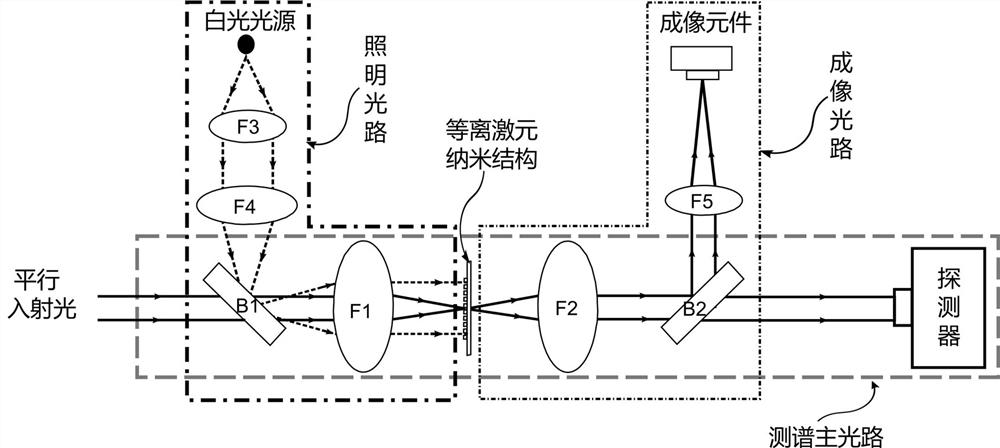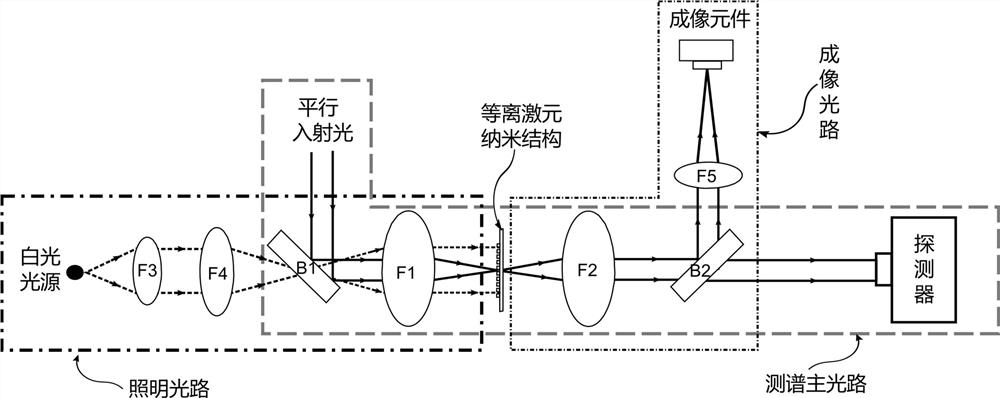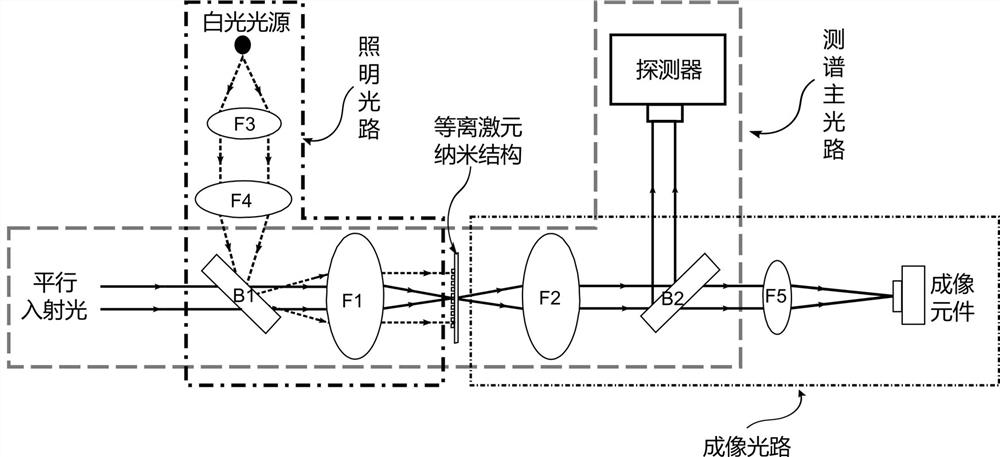Spectroscopy and Imaging Optical System of Surface Plasmon Resonance in Invisible Light Band
A surface plasmon and imaging optics technology, applied in the field of spectrum measurement and imaging optical system, can solve the problems of high cost, high optical resolution, complex structure, etc., and achieve the effect of reducing workload and cost
- Summary
- Abstract
- Description
- Claims
- Application Information
AI Technical Summary
Problems solved by technology
Method used
Image
Examples
Embodiment 1
[0021] Example 1: as Figure 1~Figure 8 As shown, a spectrum measurement and imaging optical system for surface plasmon resonance in the invisible light band includes a laser, an object stage, a measured plasmon nanostructure, a main spectrum measurement optical path, an imaging optical path and an illumination optical path.
[0022] The laser is a laser in the visible light band, which is used to determine the image of the main optical path focus in the imaging optical path.
[0023] The stage is a two-dimensional or three-dimensional movable stage on which samples with plasmonic nanostructures can be fixed. The stage is located at the confocal position of two confocal condensing optical elements in the main optical path of the spectrum measurement, and confocalness is the coincidence of the focal points of the two confocal optical elements.
[0024] The main optical path for spectrum measurement includes two confocal condensing optical elements F1 and F2, two spectral optic...
Embodiment 2
[0045] Figure 1-4 The four optical paths are equivalent in figure 1 The illustrated embodiments illustrate two preferred embodiments of spectral main path signal collection.
[0046] Option 1: If the photodetector with dispersion function has an optical fiber input interface, along the beam propagation direction, use a collimator to couple the transmitted light signal into the optical fiber at a position behind the splitting optical element B2 in the main optical path of the spectrum measurement. like Figure 5 shown. The working wavelength of the collimating mirror matches the working wavelength of the invisible light band light source and the photodetector, and the NA value of the collimating mirror matches the NA value of the optical fiber. The collimating mirror can effectively collect the transmitted parallel light signal and provide a switching function for free-space light coupling into the optical fiber.
[0047] Option 2: If the photodetector with dispersion func...
Embodiment 3
[0049] Figure 1-4 The four optical paths are equivalent in figure 1 The illustrated embodiment illustrates a preferred embodiment of the spectroscopic main optical path signal input.
[0050] If the invisible light band light source has an optical fiber output interface, a collimator should be placed at a certain position in front of the splitting optical element B1 in the main optical path of the spectrum measurement along the propagation direction of the light beam. The collimator is coupled with the optical fiber to output the light source signal in the invisible light band as parallel light, such as Figure 7 shown. The working wavelength of the collimating mirror matches the working wavelength of the invisible light source, and the NA value of the collimating mirror matches the NA value of the optical fiber. The collimating mirror can effectively collect the optical signal in the optical fiber, and provide an effective way for the optical signal in the optical fiber t...
PUM
 Login to View More
Login to View More Abstract
Description
Claims
Application Information
 Login to View More
Login to View More - R&D
- Intellectual Property
- Life Sciences
- Materials
- Tech Scout
- Unparalleled Data Quality
- Higher Quality Content
- 60% Fewer Hallucinations
Browse by: Latest US Patents, China's latest patents, Technical Efficacy Thesaurus, Application Domain, Technology Topic, Popular Technical Reports.
© 2025 PatSnap. All rights reserved.Legal|Privacy policy|Modern Slavery Act Transparency Statement|Sitemap|About US| Contact US: help@patsnap.com



